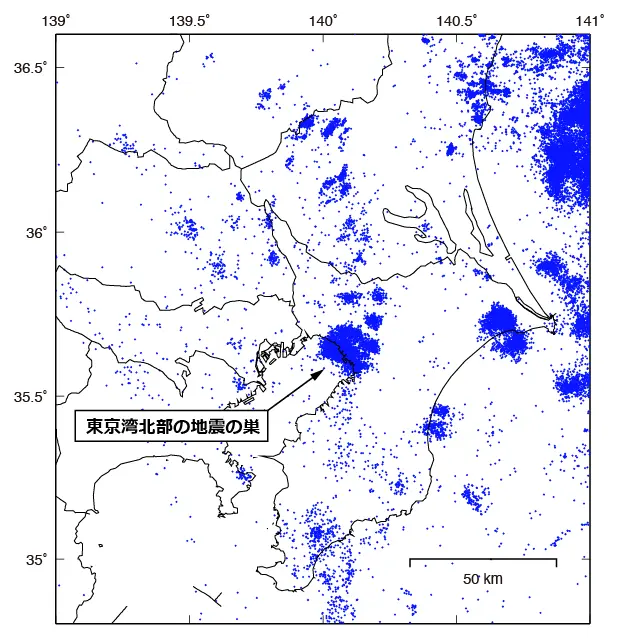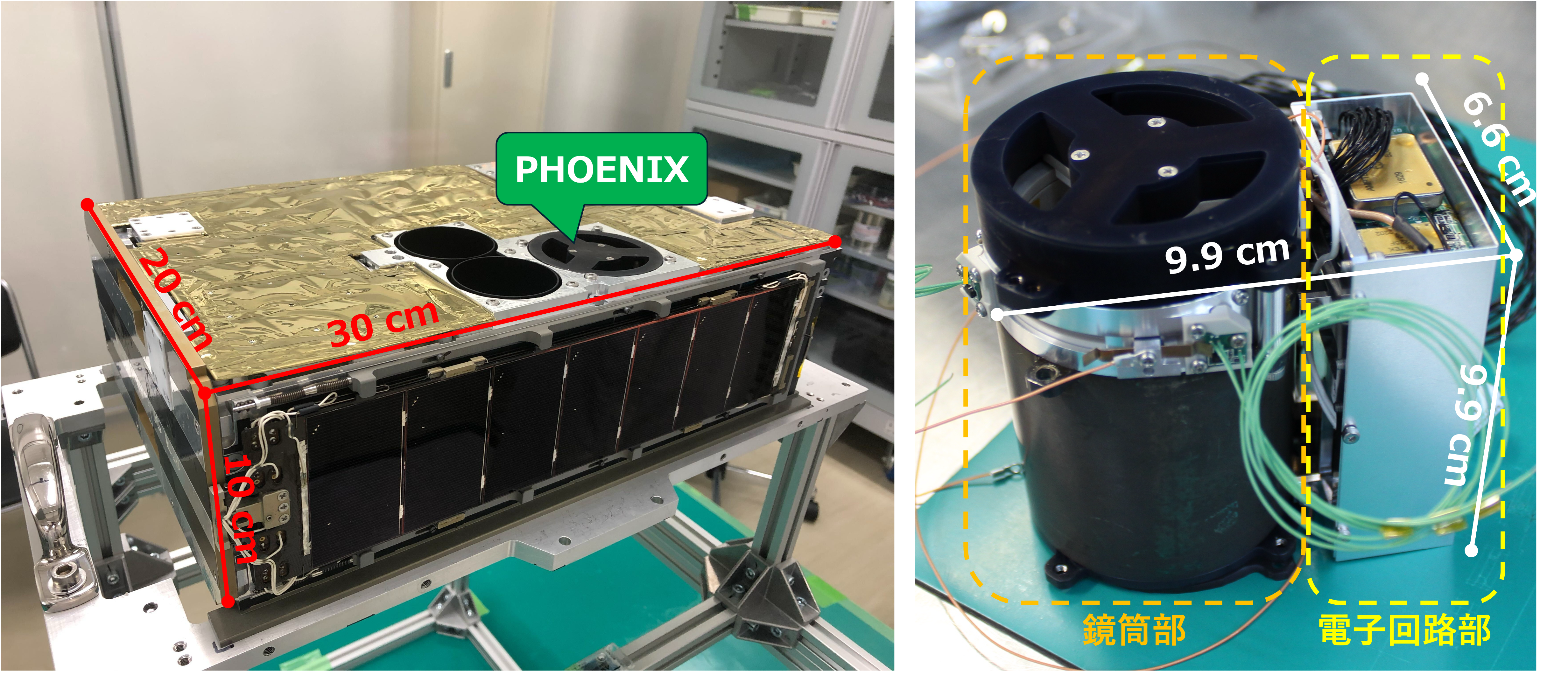2025-04-24 東京科学大学

図1.関東地方の地震活動(太平洋プレート上面付近の地震)
<関連情報>
- https://www.isct.ac.jp/ja/news/t5lrgcv357br
- https://www.isct.ac.jp/plugins/cms/component_download_file.php?type=2&pageId=&contentsId=1&contentsDataId=1428&prevId=&key=e289b7ffd1502b2a08da19f51cf9e9fb.pdf
- https://www.sciencedirect.com/science/article/pii/S0040195125001143?via%3Dihub
東京湾地震の巣: 沈み込む海山への示唆 The Tokyo Bay earthquake nest, Japan: Implications for a subducted seamount
Junichi Nakajima
Tectonophysics Available online: 5 April 2025
DOI:https://doi.org/10.1016/j.tecto.2025.230728
Highlights
- I investigated an earthquake nest at depths of 60–70 km beneath the Tokyo metropolitan area.
- The earthquake nest comprises a much finer internal structure than conventionally considered.
- Seismogenic behavior is spatially different.
- Seismogenesis may be explained by a subducted seamount.
Abstract
Many earthquake nests (regions of highly concentrated seismicity isolated from nearby activity) exist beneath the Tokyo metropolitan area in Japan. The largest and most active nest is the Tokyo Bay earthquake nest located at depths of 60–70 km in the northern part of Tokyo Bay. The largest earthquake in the Tokyo Bay earthquake nest was an M6 earthquake over the last ∼20 years. However, it is considered that the 1894 Meiji Tokyo earthquake (M7.0) occurred around the nest. Of note, no studies have explored the Tokyo Bay earthquake nest, and the spatial distribution of earthquakes remains poorly understood. Thus, this study is aimed at investigating the spatial characteristics of the seismogenic behavior of the Tokyo Bay earthquake nest through precise hypocenter relocation. The findings reveal that the earthquake nest forms a circular distribution of earthquakes (radius of ∼10 km), and plate-interface earthquakes occur on a well-defined westward-dipping plane with a slightly steeper dip angle than the average dip angle of the subducting Pacific (PAC) plate. Moreover, the seismogenic behavior differs spatially, with many and few plate-interface earthquakes occurring in the second quadrant and third quadrant of the nest, respectively, and M ≥ 5 earthquakes occurring in the fourth quadrant. As the characteristic scale (radius and height) of the Tokyo Bay earthquake nest is comparable with that of the seamounts on the incoming PAC plate, I infer that the Tokyo Bay earthquake nest is caused by a subducted seamount. The size of the Tokyo Bay earthquake nest is sufficiently large to generate M ∼ 7 earthquakes and can be a candidate for the hypocenter of the Meiji Tokyo earthquake.



